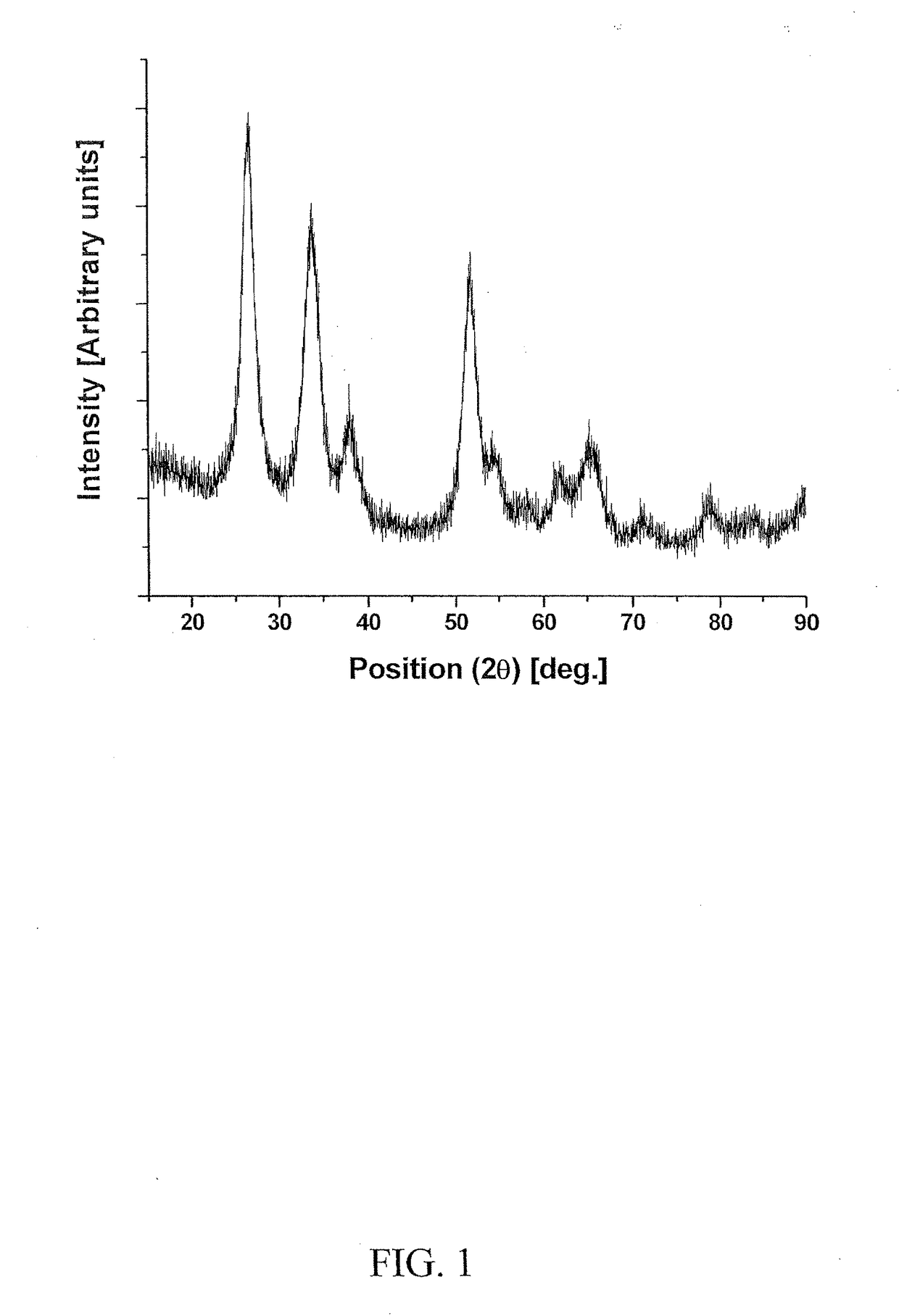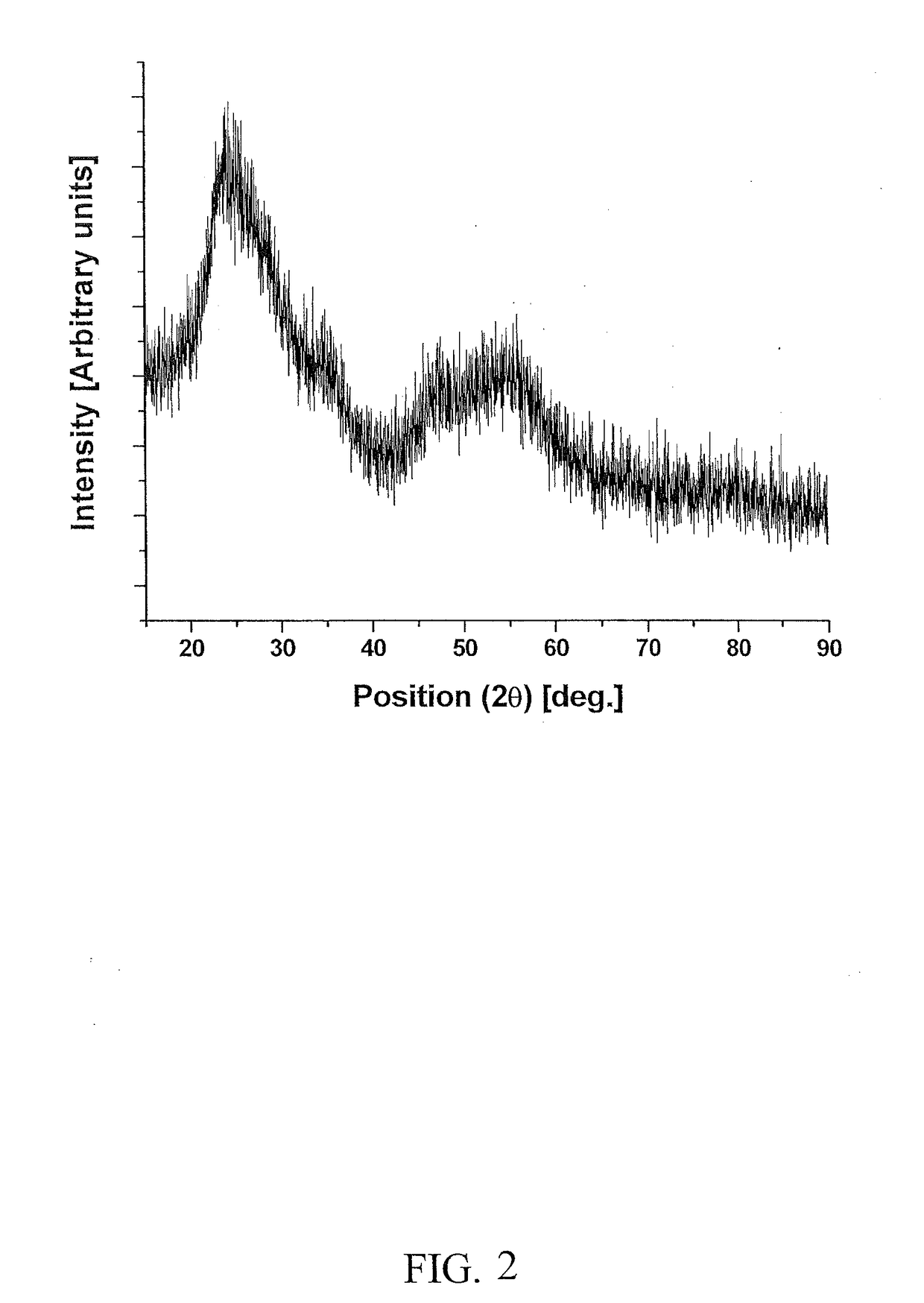Non-noble metal based electro-catalyst compositions for proton exchange membrane based water electrolysis and methods of making
a proton exchange membrane and electrocatalyst technology, applied in the field of electrocatalyst compositions, can solve the problems of inability to economically generate clean and pure hydrogen combined with cost-effective storage and distribution, slow progress in water electrolysis hydrogen fuel production, and significant capital costs of current electrolyzer technology. , to achieve the effect of reducing the service life of the electrode, and reducing the overall cost of hydrogen production
- Summary
- Abstract
- Description
- Claims
- Application Information
AI Technical Summary
Benefits of technology
Problems solved by technology
Method used
Image
Examples
example 1
[0133]Electro-catalyst powders of IrxSn1-xO2 and IrxNb1-xO2 with fluorine doping were prepared for the oxygen evolution reaction in PEM-based water electrolysis. Fluorine doped SnO2 and Nb2O5 were prepared using a surfactant approach and a sol-gel route, respectively.
Material Preparation
[0134]Cetyltrimethylammonium bromide [CTAB, Sigma Aldrich, 95%] was used as a surfactant for the synthesis of tin oxide and fluorine doped tin oxide. CTAB was dissolved in D.I. water and stirred vigorously to get a homogeneous solution. Ammonium hydroxide [NH4OH, Alfa Aesar, 28-30 wt. %] was added to the above solution along with D.I. water. Tin (II) chloride [SnCl2.xH2O, Alfa Aesar, 99.995%] was used as the inorganic precursor. It is dissolved in D.I. water and introduced to the mixture of CTAB and ammonium hydroxide solution. This solution was stirred vigorously for 3 hours and the mixture then rested at room temperature for 48 hours. The precipitate was separated from the solution by centrifuging ...
example 2
Preparation of the Electrodes
[0142]FIG. 8 shows the molar ratio of Ir:Sn:Nb and the corresponding compositions selected for investigation of the anode electocatalyst for PEM-based water electrolysis. Iridium tetrachloride [IrCl4, 99.5%, Alfa Aesar], niobium chloride [NbCl5, 99.95%, Alfa Aesar] and tin (II) chloride dihydrate [SnCl2. 2H2O, 98%, Alfa Aesar] were used as the sources for Ir, Nb and Sn, respectively. The starting precursor compositions used to synthesize (Ir,Sn,Nb)O2 electrocatalyst is tabulated in Table 1. Stock solution corresponding to IrCl4, SnCl2.2H2O and NbCl5 of the desired compositions were dissolved in absolute ethanol inside an atmosphere controlled glove box (MBraun Unilab Work station) to prevent any undesired side reaction. The resulting solution was then spin coated on pretreated titanium (Ti) substrates of ˜1 cm2 areas (Specialty coating Systems Inc, Model P6712) with rotating speed of 500 rpm for 10 sec. Prior to coating, the Ti substrates were sand blast...
example 3
[0168]The electronic structures of CaNb2O6, SnTa2O6, Ca2Nb2O7, and Ca2Ta2O7 compounds were doped with small amounts of elements from 3A, 3B, 5B, 6A groups of the Periodic Table as well as F from group VII.
Theoretical Approaches and Details of the Methodology
[0169]For calculating the total energies, electronic structure and density of electronic states the Vienna Ab-initio Simulation Package (VASP) was used within the projector-augmented wave (PAW) method and the generalized gradient approximation (GGA) for the exchange-correlation energy functional in a form suggested by Perdew and Wang. This program calculated the electronic structure and via the Hellmann-Feynman theorem, the inter-atomic forces were determined from first-principles. Standard PAW potentials were employed for the elemental constituents of all pure and doped compounds in the study.
[0170]For all the materials considered the plane wave cutoff energy of 520 eV had been chosen to maintain high accuracy of the total energ...
PUM
 Login to View More
Login to View More Abstract
Description
Claims
Application Information
 Login to View More
Login to View More - R&D
- Intellectual Property
- Life Sciences
- Materials
- Tech Scout
- Unparalleled Data Quality
- Higher Quality Content
- 60% Fewer Hallucinations
Browse by: Latest US Patents, China's latest patents, Technical Efficacy Thesaurus, Application Domain, Technology Topic, Popular Technical Reports.
© 2025 PatSnap. All rights reserved.Legal|Privacy policy|Modern Slavery Act Transparency Statement|Sitemap|About US| Contact US: help@patsnap.com



